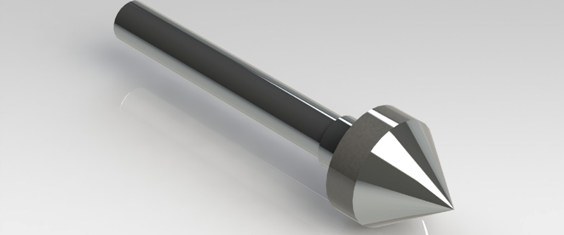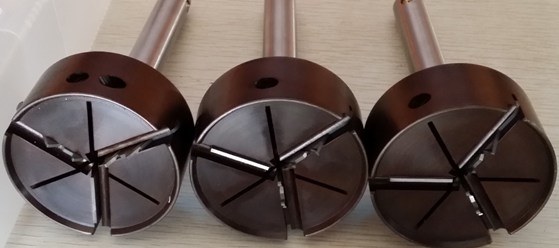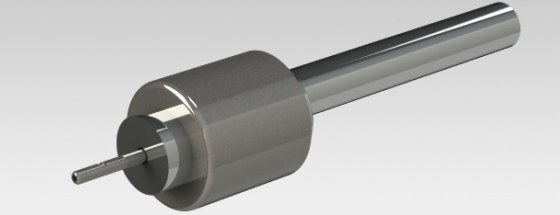**2CPV Table Model Tube End Finish Machine**
**Description:** A table model tube end finish machine designed for deburring, flaring, and beading of the inside and outside of metal round tube ends.
**Model:** 2CPV
**Application:** Ideal for preparing tube ends with a bead or flare, or simply deburring and squaring. This machine can perform all these functions, requiring only a change of tooling to switch between operations.
**Introduction:** The 2CPV tube end finish machine is a versatile solution that allows for multiple processing tasks in one setup. It’s suitable for various materials including titanium alloys, stainless steel, and aluminum alloys. With its efficient design, it ensures precision and ease of use.
**Main Specifications:**
- Dimensions: 460 x 650 x 380 mm (excluding protruding parts)
- Weight: 160 kg
- Power Supply: 220V ±10%, 50Hz/60Hz, single phase
- Power: 1 kW
- Air Pressure: 0.4–0.8 MPa
- Clamping Mode: Pneumatic
- Clamping Force: ≥5 kN
- Rotation Axis: Asynchronous Motor, 0.75 kW
- Coaxial Tolerance: ≤0.02 mm
- Rotation Axis Deflection: ≤0.01 mm
**Capacity:**
- Tube OD for chamfer/squaring/deburring: Φ6–50 mm
- Tube WT for chamfer/squaring/deburring: ≤10 mm
- Tube OD for flaring: Φ3–50 mm
- Tube WT for flaring: Stainless Steel 0.4–1 mm, Aluminum Alloy 0.5–1.5 mm
- Flaring Method: Eccentric inner diameter rotary swage
- Tube OD for beading: Φ6–45 mm
- Tube WT for beading: Stainless Steel ≤0.5 mm, Aluminum Alloy ≤1 mm
- Beading Method: Inner diameter rotary swage
- Minimum Clamp Length: 10 mm (varies by material and wall thickness)
- Tube Material: All types of titanium alloys, stainless steel, and aluminum alloys
**Features:**
- One clamping operation completes squaring, deburring, and chamfering simultaneously.
- Quick die changes allow for flaring and beading processes.
- Cylinder clamping ensures tight grip while protecting the tube from damage.
- Thin clamps and dies enable processing of tubes as short as 10 mm.
- Integrated lever and clamping cylinder provide smooth and efficient operation.
- Variable frequency control of the motor ensures adaptability to different materials.
- Tube length positioning guarantees consistent and repeatable results.
- Eccentric flaring center allows for multiple sizes and wall thicknesses.
- Chamfer/deburring dies can also be used for flaring, reducing tooling requirements.
**Main Components:**
- Top-mounted spindle for easy access, especially for bent or complex tubes.
- Motor with variable frequency control for precise spindle movement.
- Front-mounted clamp capable of gripping tubes as short as 10 mm.
- Chip groove in the clamp for effective dust removal.
- Mechanical lever system for smooth and controlled feed.
- Adjustable tube feed stopper with mechanical lock.
- Spindle feed position ensures consistency and prevents interference.
- Protective organic glass cover and waste collection box for safety and cleanliness.
**Tooling Options:**
1. **Flaring Center:** An eccentric shaft that enables multiple sizes and wall thicknesses to be flared with one tool.

2. **Flaring Dies:** Can also be used for chamfering, deburring, and squaring, reducing the need for multiple sets of tools.

3. **Squaring/Deburring Head:** Smart design with adjustable blade positions, allowing one set of blades to handle multiple tube dimensions.

4. **Beading Head:** Works with beading tips or arbor, capable of handling tubes as small as 6 mm.

This machine is an essential tool for any workshop dealing with metal tubes, offering high precision, versatility, and efficiency. Whether you're working on automotive, industrial, or HVAC applications, the 2CPV machine is a reliable and cost-effective choice.
A lot of work needs to be done before any tinplate box is formed. When designing the Iron Box drawing, we should consider what factors to plan, how to better express the information that the seller wants to convey, and how to accurately highlight the characteristics of the product. So, what factors should we pay attention to when designing and planning?
1. Important Elements of Text Planning
The words on the tin can picture are symbols to convey ideas, communicate lofty sentiments and information, and express a certain theme. The trademark, product name, explanatory text, advertising text, manufacturer, company or distribution unit on the commodity iron box reflect the essence of the packaging box. When planning the Metal Packaging, these words must be considered as a part of the overall planning of the packaging. The key to the planning of the words on the surface of the iron box picture is to be satisfied with the following: the content of the words is concise, realistic, vivid, easy to read and remember; The font planning should reflect the characteristics, nature and uniqueness of metal cans, and have good identification and aesthetic functions; The arrangement of words should be in harmony with the overall planning style of the packaging Iron Cans.
2. Important elements of graphic planning (decoration graphic planning and object graphic planning):
As the language of planning, the iron can figure is to show the connotation and external elements of the image, and convey the information to consumers in a visual image way. Many elements such as the function of the commodity iron box, the meaning of the trademark, the name of the product, and the shape of similar products should be familiar with and discussed in order to complete the accurate positioning of the figure. General methods are mostly used for comfort. A few patterns, color blocks or texture effects of general points, lines and surfaces are used to form a picture of iron cans. The picture is concise, eye-catching, and has a sense of style. The painting method of graphic planning of objects is intuitive and has a strong interest in appreciation. It is a way to promote, beautify, and promote iron cans.
Round Tin Box,Round Tin Can,Round Gift Box,Round Pot Tin Box,Tin Cans